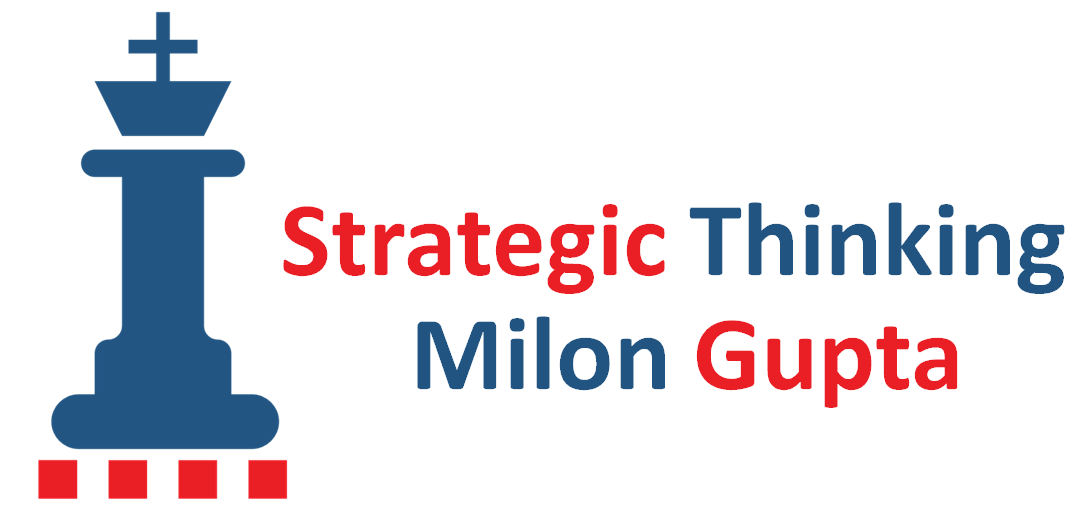Generally, the assumption still prevails that strategy and strategic thinking are an exclusive domain of a company’s executives. This assumption is historically well founded. And it is wrong in today’s business environment.

The Greek word “strategos”, of which the term “strategy” is derived, means “general”. And the general in ancient Athens as well as in the classical structure of the military up to the 20th century designed the battle plans and gave orders. Soldiers were required to follow blindly and think as little as possible, not to speak of questioning orders.
When at the end of the 19th century the term strategy, together with strategic concepts, entered companies, the meaning was basically similar: the boss thought, planned, and gave orders, the employees executed. In quite some companies it works more or less like that until today.
There are, however, good reasons, why this structure and distribution of roles is ineffective in today’s economy and why it has negative impact on a company’s competitiveness. Or, to put it positively: if you would like to keep your company competitive in the mid-term, you should promote strategic thinking of employees at all levels. In my view there are five substantial reasons for this:
1. The high complexity of companies and markets
Already in medium-sized enterprises processes heavily based on the division of labor have reached a degree of complexity that neither a CEO nor department heads alone could understand and centrally plan.
In strategic planning as well as in strategy implementation it is necessary to have not just people who work, but also people who think. Only if you consider the big picture in your operational work, the gap between corporate strategy on executive level and strategy implementation on the operational level can be closed.
In many companies this doesn’t work properly, with the result that the board is every year surprised why the employees don’t properly execute their ingenious corporate strategy.
2. Pressure to adapt due to strong dynamics of change
The job of executives has become much more challenging and demanding since the times of the economic miracle in the 1950s. This is supported by increased complexity and the high dynamics of change caused by global economic processes and technical innovations.
The rapid pace of change can easily lead to a situation, where the corporate strategy from the beginning of the year has become obsolete at the end of the year through new developments.
Many of these new developments will be first registered at the touchpoints, where company and customers come into contact. However, in most cases executives are not at the touchpoints, but rather normal employees, like salespeople or customer service staff. If employees think ahead proactively and register changes which they communicate to the board level, it can significantly accelerate the adaptation of corporate strategy to changed market realities.
3. The cost of hierarchical corporate structures
Centrally-managed hierarchical companies bring considerable costs due to efficiency losses.
They are caused by the permanent strain of executives who have to take all strategic decisions, as well as all the important operational decisions without getting the decision-relevant information by employees.
Employees, on the other hand, are frustrated by decisions, which are frequently decoupled from their reality at the operational level. If, in addition, there is a corporate culture in which proactive thinking is not rewarded, that can lead to frustration, and in extreme cases to passive resistance against the plans from the top.
4. The necessity of agile organisational structures
Many successful companies, like for example Alphabet (formerly know as Google) or Lego, have discovered how important it is to create and sustain agile organisational structures.
Only through agility can enterprise respond appropriately to fast changes caused by innovative technologies, changed customer needs, and new competitors.
However, an agile organisation can only function with employees who think strategically.
If the horizon of employees ends at the borders of their own work area, fast adaptations are hard to implement. Agility requires that change cannot only be started from the top, but also from the bottom, from employees at the grass-roots level.
5. Qualification and motivation of employees
In today’s knowledge economy, companies depend on highly qualified employees.
In recent decades, low-qualification jobs have been systematically transferred to low-wage countries.
During the advanced phase of industrialisation in Germany at the end of the 19th century it would have been hardly destined for success to expect proactive thinking from workers at the production line. Because the work processes were designed in a way that it was not desirable and necessary.
In the meantime the work processes and skills profiles have changed considerably.
Today, in developed industrial nations like Germany there are predominantly well qualified employees, who are aware of their qualification. And they often have more expectations towards their work than to get money into their account at the end of the month.
An executive who wastes this huge potential of qualification and motivation runs the risk that employees go inter inner resignation with the effect that the company loses competitiveness. This can be prevented by engaging employees at all levels in the strategy process. It could be in the planning phase as “sensors” for market developments or in the implementation phase as proactively thinking “intrapreneurs”. Employees could intelligently and self-controlled adapt corporate strategy in their work area to the operational realities.
Conclusion
There are many good reasons to promote strategic thinking not only for executives but also for employees at all levels. Those who understand and consequently implement this can sustainably strengthen the competitiveness of their company.
The promotion of strategic thinking includes the creation of adequate structures and an open corporate culture. Specifically, this means that strategy workshops should not only be performed for the top management level. It is rather advisable to perform on all levels of a company educational measures which promote strategic thinking.
